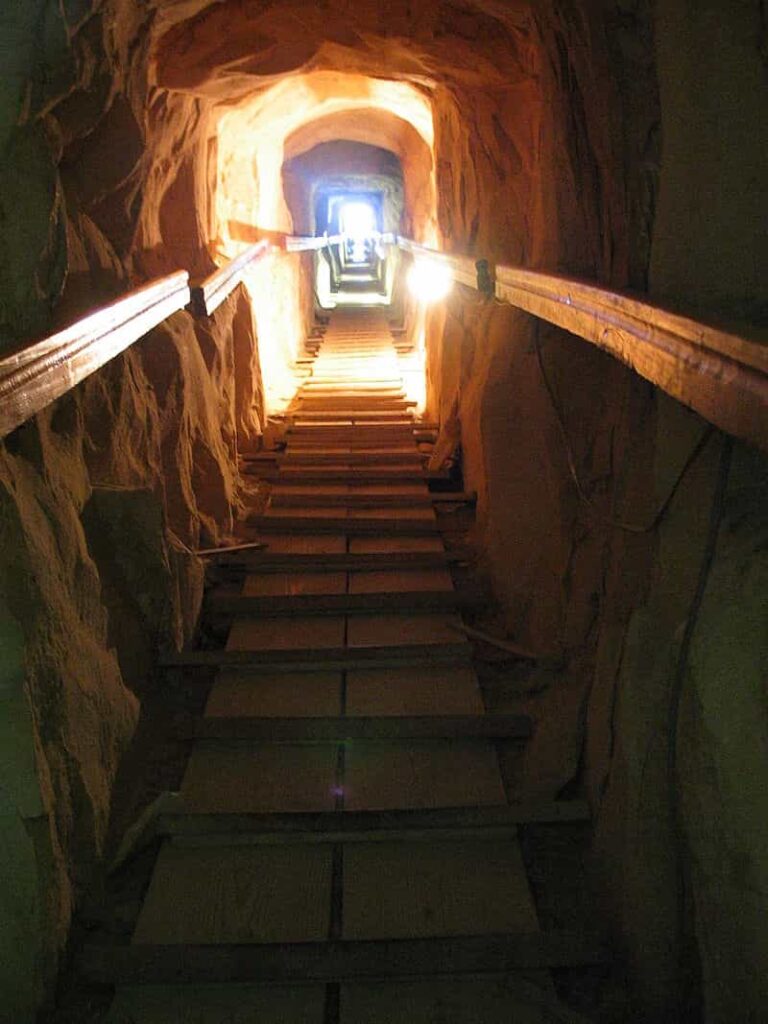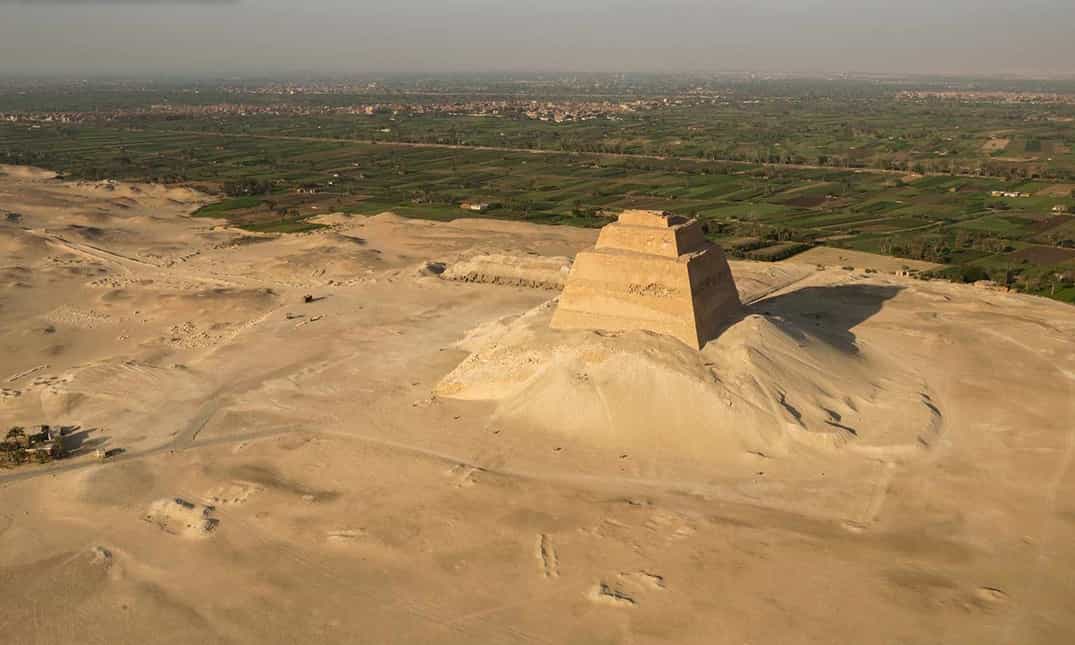Meidum Pyramid (2614 – 2579 BC)
Despite its current dilapidated state and irregular form, the Meidum Pyramid stands as one of Egypt’s most significant architectural achievements. Regarded as the inaugural of three pyramids commissioned by Pharaoh Sneferu during the Fourth Dynasty, its construction marked the genesis of the iconic pyramid design.
Situated a brief distance from El Fayum, to the south of the Nile Delta, the Meidum Pyramid looms enigmatically over the desert terrain. Unlike the imposing structures of Giza, it lacks the immediate splendor that draws tourists, often leading to its exclusion from typical sightseeing routes.
Notwithstanding its modest appearance today, the Meidum Pyramid holds immense historical importance in the evolution of pyramid construction and the broader realm of Egyptian architecture. Dubbed the “False Pyramid” or the “Collapsed Pyramid,” it once boasted smooth faces and soared to a height of 90 meters, though only remnants of its inner core endure.
Nestled within a burial ground south of Saqqara, approximately 100 kilometers from Cairo, the Meidum Pyramid’s central structure remains preserved amidst a mound of debris from its original casing. These ruins serve as a testament to a pivotal juncture in architectural history, showcasing Pharaoh Sneferu’s ambition and the early stages of pyramid construction.
The significance of the Meidum Pyramid lies not in its present condition or preservation, but rather in the pivotal moment of its inception. This pyramid is one of the trio of great pyramids constructed during the reign of Sneferu, the inaugural pharaoh of the fourth dynasty, approximately 2,500 years ago.
Building upon the construction techniques pioneered by Djoser in the Third Dynasty, which involved the gradual stacking of mastabas, Pharaoh Sneferu envisioned a distinctively different eternal resting place compared to those found in Saqqara.
Sneferu aimed for grandeur—a structure larger, more sharply pointed, and featuring eight tiers, with smooth faces setting it apart. Thus, the Meidum Pyramid marks the true genesis of the journey towards the perfect pyramid.
Originally, the pyramid measured 147 meters on each side and stood 93.50 meters tall, though its current dimensions are reduced to 65 meters due to deterioration. The entrance, situated on the north face, is elevated 20 meters above the present ground level.
The completion of this colossal stone edifice remains uncertain to this day. What is known is that the pyramid suffered a collapse in ancient times, leaving only the central portion of its inner core standing. This unique feature imparts upon it a tower-like appearance, a rarity among Egyptian pyramids.
The seemingly modest hill upon which the Meidum Pyramid rests is, in fact, a mound formed from the debris resulting from its collapse. It is believed that the pyramid’s casing slipped off due to inadequate adhesion of the lower layers, revealing the central core.
An alternate hypothesis suggests that the pyramid remains unfinished. According to this theory, the surrounding rubble represents the dismantling of the ramps essential for its construction.
In the 15th century, Al-Maqrizi described it as a five-tiered “mountain” in progressive decay, retaining only three tiers when Napoleon’s expedition surveyed it in 1799.
Throughout the 19th century, pioneering archaeologists such as Perring and Lepsius conducted several excavations. However, it was Flinders Petrie who, in 1881, made the groundbreaking exploration, penetrating the pyramid for the first time.
Petrie’s findings revealed a passage descending 57 meters from the entrance to a horizontal corridor, nearly beneath the original floor level. This corridor leads to two small antechambers, followed by a ten-meter passage ascending to the burial chamber.








